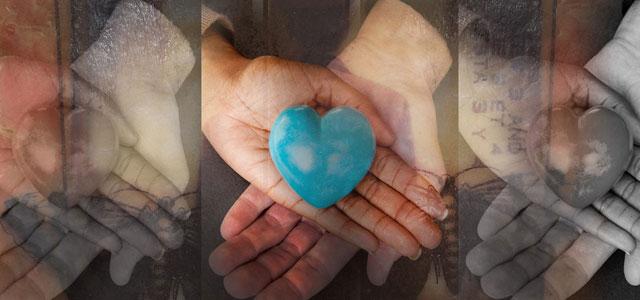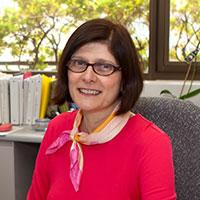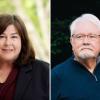
(Photos by Elisabeth Fall)
Commentary: Forgiveness as an Important Tool for Healing
Years ago, I cared for an older adult who was generally healthy but called me frequently with requests for expensive tests that were not indicated, demanded same-day visits for nonurgent concerns and was condescending to members of the health team. He frequently left angry and offensive messages on my office phone.
I found it increasingly difficult to work with this person. I was angry that he intimidated so many people, and I felt sad and guilty that I dreaded working with him. I knew I would not be able to make the proper therapeutic alliance with him unless I could find a way to understand and forgive his unwarranted demands.
Patients like the man I describe above often force some important reflection. In fact, in all of my life roles – they include parent, spouse, daughter, sibling, friend, colleague, student, clinician and educator – I have valued critical reflection and communication tools that enhance my effectiveness and strengthen my relationships. Along the way – in part by working with great masters through observation, coaching, problem solving and an exploration of the literature – I have come to deeply appreciate the concept of forgiveness.
Although the scientific research about the role and value of forgiveness is still in its formative stages, the concept has been adequately defined so that we can teach it to our patients and to current and future health care professionals as a powerful and, perhaps, underappreciated tool for improving mental, emotional, spiritual and physical well-being.
What Is Forgiveness?
The works of Drs. Robert Enright, Frederic Luskin, Laurel Mellin and Collin Tipping – as well as a deep engagement in the related reflective processes, and emotional and behavioral interventions supported by their research – have greatly influenced my forgiveness journey and my definition of the term. The many brave and forgiving individuals that I have cared for at Glide Health Services have also guided this adventure.
According to Luskin, in his book Forgive for Good, “Forgiveness is the journey of moving from telling the story as a victim to telling the story as a hero. Forgiveness means that my story changes so that I, not the grievance, am in control.”
Ruby Bridges Hall, the first African American student to attend an all-white school in the southern United States, has written, “To forgive is to set yourself free, to acknowledge that it does no good to hate.”
Based on these and other influences – and my own exploration of the idea – I define forgiveness as for-giving to oneself and others the opportunity to heal from past grievances and fully appreciate life.
The Benefits
There is a burgeoning body of research on the many benefits of forgiveness. Good sources include the International Forgiveness Institute and the Campaign for Forgiveness Research.
The researchers have found that individuals who truly forgive experience increased hopefulness, decreased anger, improved spiritual connection, increased self-confidence, improved relationships and reduced stress – with corresponding enhancements to physical and mental health.
How to Forgive
There are a number of evidenced-based approaches that promote forgiveness, many of which involve four key steps.
First, people uncover their anger. Second, they decide to forgive. Third, they consciously work on forgiveness. And fourth, they discover a release from their emotional prison by exploring and resolving past transgressions. Several studies, including a recent meta-analysis, have found that these types of forgiveness interventions were effective in helping individuals let go of past grievances.
Translating Forgiveness into Professional Practice
 JoAnne Saxe Using forgiveness in my professional practice begins with incorporating an understanding of the concept into my personal life. I use some or all of the following steps and tools depending on the significance of the grievance or how stuck I feel in the forgiveness process. This process may be organic and intuitive under some circumstances or more deliberate and systematic in others.
JoAnne Saxe Using forgiveness in my professional practice begins with incorporating an understanding of the concept into my personal life. I use some or all of the following steps and tools depending on the significance of the grievance or how stuck I feel in the forgiveness process. This process may be organic and intuitive under some circumstances or more deliberate and systematic in others.
It begins with opening my heart and mind to forgiveness, which I often do by reflecting on some powerful advice from the Luskin book: “Look for beauty and love with the same determination that grievances and hurts come to mind.” This reflection helps me ease into breathing work that is focused on gratitude and giving thanks.
Next, I think of an unresolved hurt or grievance and the related feelings. For me, it might be something like beginning to reflect on the former patient I referred to at the opening of this piece.
This step is important, because it provides me with an opportunity to bear witness to the facts as I see them and the emotional impact of the situation. It’s where I uncover my anger, which can be challenging. For some, this step may require some assistance from professionals who are skilled at guiding people through the process. I have found Emotional Brain Training, a therapeutic process developed by Mellin and her colleagues, to be particularly helpful in understanding one’s feelings, behaviors and expectations.
The next step is to reconnect to a positive state of mind – and decide to forgive. This usually begins with a deep-breathing exercise and a visualization exercise. Only then do I ask myself what I can do to address this difficult situation.
The key at this point is to use an approach that offers an opportunity to learn and grow from the grievance. Luskin’s HEAL (Hope, Educate, Affirm and Long-term commitment) method, for example, allows one to honor her or his feelings while holistically observing a situation and making a commitment to strategies for addressing the hurt and coping with these types of scenarios in the future. So if I return to the patient who was frustrating me:
Hope: I would have preferred that this patient be less confrontational and demanding with the staff and me. I also wish that I had aligned with the patient early in the relationship through an enhanced use of effective communication skills.
Educate: I really want to have better communications with this patient – more productive and positive interactions – but I recognize that I have limited control over the whole communication process. I accept the fact that not all relationships, including this one, unfold the way I want them to.
Affirm: I have the option to grow from any hurtful experience. In this case, I want to enhance my skills in communicating with people in difficult circumstances, while reinforcing my coping skills for dealing with my disappointment over times when communications are not productive and relationships are not supportive.
Long-term commitment: Holding my affirmation deep in my heart and including it in my career goals can help me make a steady and formal commitment to forgiveness, compassion and meaningful communications.
This type of forgiveness work often catapults me into a deep, critical reflection of my personal and professional development. For example, I might turn to Dr. Louise Aronson and her colleagues’ tool Learning from Your Experiences as a Professional (MedEdPORTAL, 2012) to help me articulate the subjective and objective aspects of lived experiences to arrive at relevant assessments and plans.
In the case of my former patient, for example, my reflections facilitated a shift in my thinking and attitude. I recognized that I needed and wanted to extend forgiveness to this individual. I also wanted to forgive myself for the anger I felt toward him and the disappointment I felt in myself for not seeking to understand the story behind his behaviors. I knew I needed help to figure out how best to work with this person while still setting limits on his harsh words and unkind gestures – and sought counsel from a colleague who is skillful at resolving conflict. She helped me restore compassion for the patient and establish a sense of genuine curiosity for his lived experience. From this support and my willingness to let go of hurt and resentment, I was able to better understand this person’s related fears and concerns about his health.
Ultimately, these efforts enabled me to establish a genuinely therapeutic relationship, one that continues to enhance his overall health. Though he eventually moved on from my practice site for insurance-related reasons, he periodically checks in with me to let me know how he is doing.
Helping Patients
In addition to helping me in my work with them, I can also bring the forgiveness tool to many patients I see in my primary care practice at Glide Health Services. Many of them have lived difficult lives, experiencing everything from childhood abuse and intimate partner violence to having been perpetrators of violence themselves. I know they can benefit from supportive care by our skillful team of mental health providers, but they often need to prepare themselves for this type of care – and forgiveness can help in the process.
Consequently, I begin by helping them identify their hurt or grievance. I mention the power of forgiveness and share some forgiveness resources if they are receptive to this type of self-help. I also might explore their readiness for the professional mental health services they will ultimately need to address their complicated and unresolved hurts.
Generally, patients seem to appreciate this approach, often because it allows them to pause for reflection – and to be heard.
This forgiveness process – this being heard, reaching understanding and grasping the opportunity to heal from past grievances and fully appreciate life – has very practical, real-life implications that remind me of another great thinker on the power of forgiveness. Desmond Tutu, the social rights activist and Anglican bishop who promoted a postapartheid nationwide forgiveness initiative in South Africa in the 1990s, has written:
“Forgiveness and reconciliation are not just ethereal, spiritual, other-worldly activities. They have to do with the real world. They are realpolitik, because in a very real sense, without forgiveness, there is no future.”
JoAnne Saxe is clinical professor and co-director of the Adult-Gerontology Primary Care Nurse Practitioner specialty in UC San Francisco School of Nursing’s Department of Community Health Systems.



